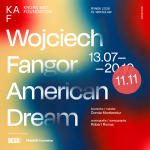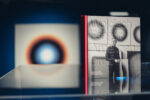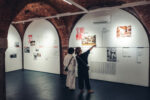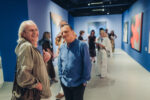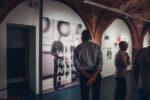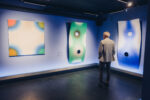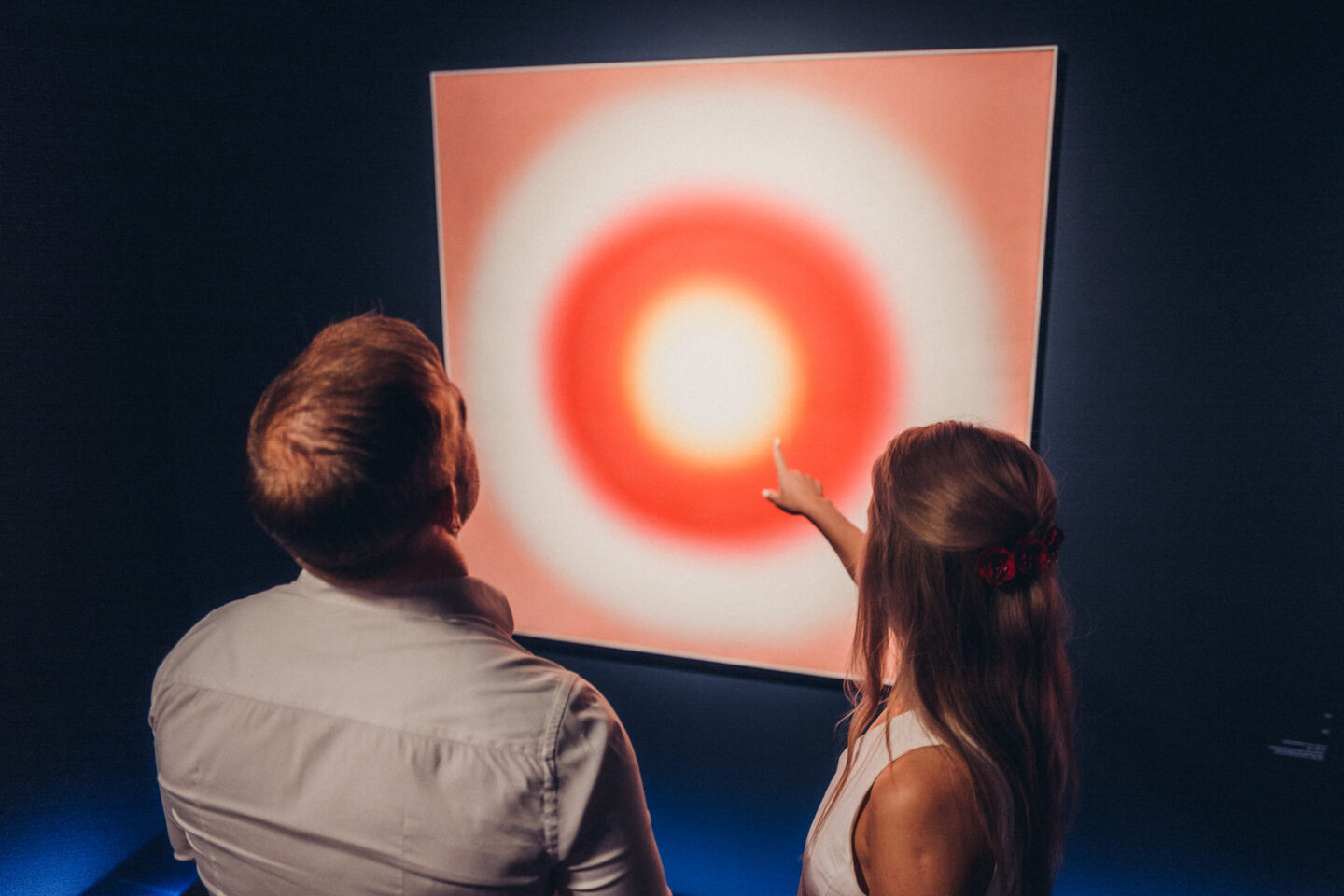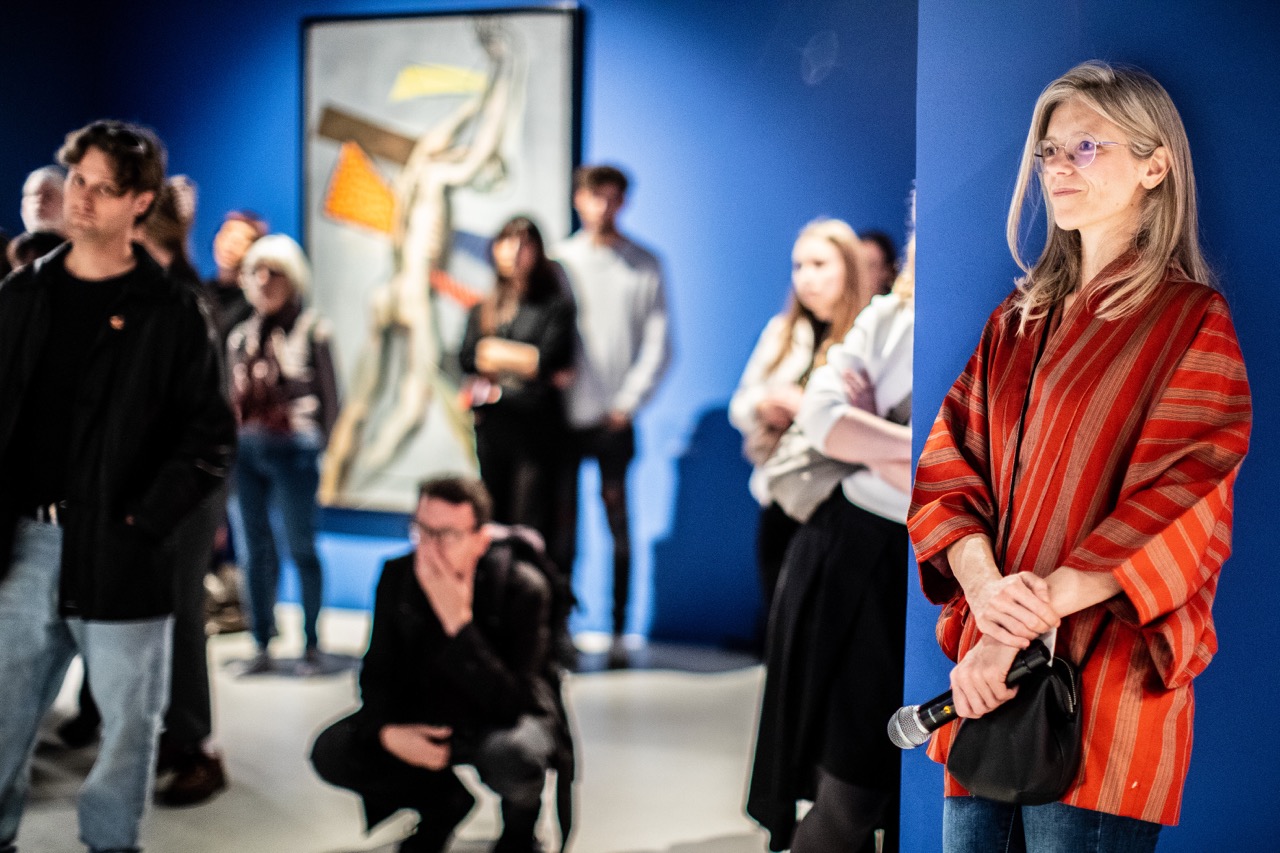Program
KAF
13 July – 11 November 2024
Venue: Krupa Art Foundation, Rynek 36, Wrocław
Duration: 13 July to 20 October 2024
Exhibition curator: Dorota Monkiewicz
Exhibition designer: Robert Rumas
Exhibition partners: DESA Unicum, Fangor Foundation
Opening hours:
Monday, Wednesday, Thursday: 12–6 p.m.
Friday–Sunday: 11 a.m.–8 p.m.
Tuesday: closed
Admission: PLN35 (full price ticket), PLN25 (reduced price)
curatorial tours:
July 14, 2024, 5PM
July 27, 2024, 5PM
guided tours on weekends:
each Saturday and Sunday, 5PM
Krupa Art Foundation invites you to a unique art exhibition dedicated to the work of the master of op-art
Wrocław once again asserts its position on the Polish art scene. From 13 July, visitors to Krupa Art Foundation (KAF) will have an opportunity to see the unique monographic exhibition Wojciech Fangor. American Dream, dedicated to one of the most renowned Polish artists of the 20th century. It is a rare chance to see with your own eyes the famous spinning circles and psychedelic waves, displayed not as they usually are – as individual works of art scattered in Polish collections, but gathered in one place to be experienced in a truly immersive fashion, in accordance with the artist’s concept of “positive illusory space.” The exhibition can be seen from 13 July to 20 October at the KAF seat (Rynek 27/28).
Immerse yourself in Wojciech Fangor’s art
The exhibition at Krupa Art Foundation focuses on the period when Wojciech Fangor created his most famous works – the spinning circles and edgeless waves that seem blurred in the viewer’s eye. The 1960s and 1970s was a time of his intense experimentation with op-art, or optical art, which, due to its immersive nature, affects the viewer’s sense of sight and perception of space. Through these works, the viewer interacts with space, experiencing psychophysical sensations of movement and change.
The presentation features 48 objects arranged in such a way as to allow the audience to experience what the artist called “positive illusionary space.” Fangor’s intention was to deliberately affect the physiological process of seeing and the psychosomatic experience of oneself in space. In 1969, the artist wrote to Krystyna Fangor: “If I have achieved anything in painting, it is not in the sense of a literary sign, but rather in the field of sensual, visual experience.”
All the featured paintings were created outside Poland. For this occasion, they have been borrowed from private collections in Poland and abroad. This is a unique opportunity to see them all in one place. They include masterpieces that demonstrate the artist’s fascination with optical illusion and his attempts to influence human perception.
The exhibition’s partners are the DESA Unicum auction house and the Fangor Foundation, which have assisted in acquiring the works, liaising with collectors and sharing their expertise.
Fangor and his American dream
Wojciech Fangor went down in art history as one of the most important Polish painters of the 20th century, internationally renowned for his unique approach to op-art and his ability to create works that affect the viewer’s perception. He began with traditional figurative painting before experimenting with form and colour in the 1950s, which led to his interest in space as an integral element of the work. Fangor’s most spectacular period came in the 1960s and 1970s, when he developed his famous op-art techniques.
A particularly significant moment in his career was a solo exhibition at the Guggenheim Museum in New York in 1970, making him the only Polish artist to have been recognised in this way by this prestigious institution. This was a huge honour, especially in the context of the political isolation of artists from behind the Iron Curtain. As many as seven objects from this presentation are on display at the KAF seat. The period of the exhibition at the Guggenheim was a time when the artist explored and added nuance to issues of symmetry. It was then that starfish-shaped motifs and mirror-image waves with inverted or displaced symmetry began to appear in his paintings. The circles also evolved and began to lose the trace of the painting’s surface – the white spot in their centre, which was now filled with colour, intensifying the hallucinatory effect. “These canvases can easily be associated with American counterculture, in particular the psychedelic, colourful visions induced by drugs.”
“Arguably, the artist’s creativity reached its peak at around the time of the Guggenheim exhibition, and then, without the backing of a supportive gallery, quickly burnt out. Whatever happened later in the artist’s practice was never as relevant and topical as this chapter between 1956 and 1973,” says Dorota Monkiewicz, curator of the exhibition at Krupa Art Foundation.
Fangor emigrated to the United States in the mid-1960s and quickly established cooperation with a prestigious New York gallery, which enabled him to exhibit and sell his paintings successfully. In this way, he achieved his “American dream.” In the 1990s he returned to Poland, where he continued to develop new projects. He died in 2015, leaving behind a rich body of work that continues to inspire artists around the world today.
The exhibition Wojciech Fangor. American Dream is an opportunity to become immersed in the world of painting that not only appeals to the eye, but also to the entire physical perception of the viewer. It is a story about pursuing dreams through creative experiments. For lovers of contemporary art, this is a unique opportunity to get to know one of the most important Polish artists of the 20th century and to experience the unique emotions behind his works. The exhibition is open from 13 July to 20 October at the Krupa Art Foundation’s seat in Wrocław (Rynek 27/28).
(PL) Wojciech Fangor (1922–2015) był jedynym polskim artystą, którego doceniono wystawą indywidualną w Muzeum Guggenheima w Nowym Jorku – to największy sukces, jaki w okresie zimnej wojny mógł osiągnąć jakikolwiek artysta spoza żelaznej kurtyny. Marzeniem Fangora było uprawiać innowacyjną sztukę w miejscu, w którym cieszyłaby się powszechnym zainteresowaniem i zrozumieniem. Dlatego pomimo już rozwijanej kariery w Polsce, chciał pracować i mieszkać w Stanach Zjednoczonych. Od wyjazdu do Austrii w 1961 roku, Fangor był nieustająco w drodze do Ameryki, zmieniając pracownie, malując, ucząc, wystawiając w Wiedniu, Paryżu, Berlinie i Londynie i starając się o amerykańską wizę. Ostatecznie udało mu się osiedlić w Stanach w 1966 roku i nawiązać współpracę z renomowaną galerią w Nowym Jorku, dzięki której mógł z powodzeniem malować, wystawiać i sprzedawać. Fangor zrealizował swoje amerykańskie marzenie, ale później doznał też wielu zawodów i po latach, w 1999 roku reemigrował do Polski. Wystawa Wojciech Fangor. American Dream skupia się jednak na latach optymizmu i wielkich nadziei twórczych.
Wszystkie prezentowane na wystawie obrazy optyczne Wojciecha Fangora powstały poza Polską i pochodzą z prywatnych kolekcji.


